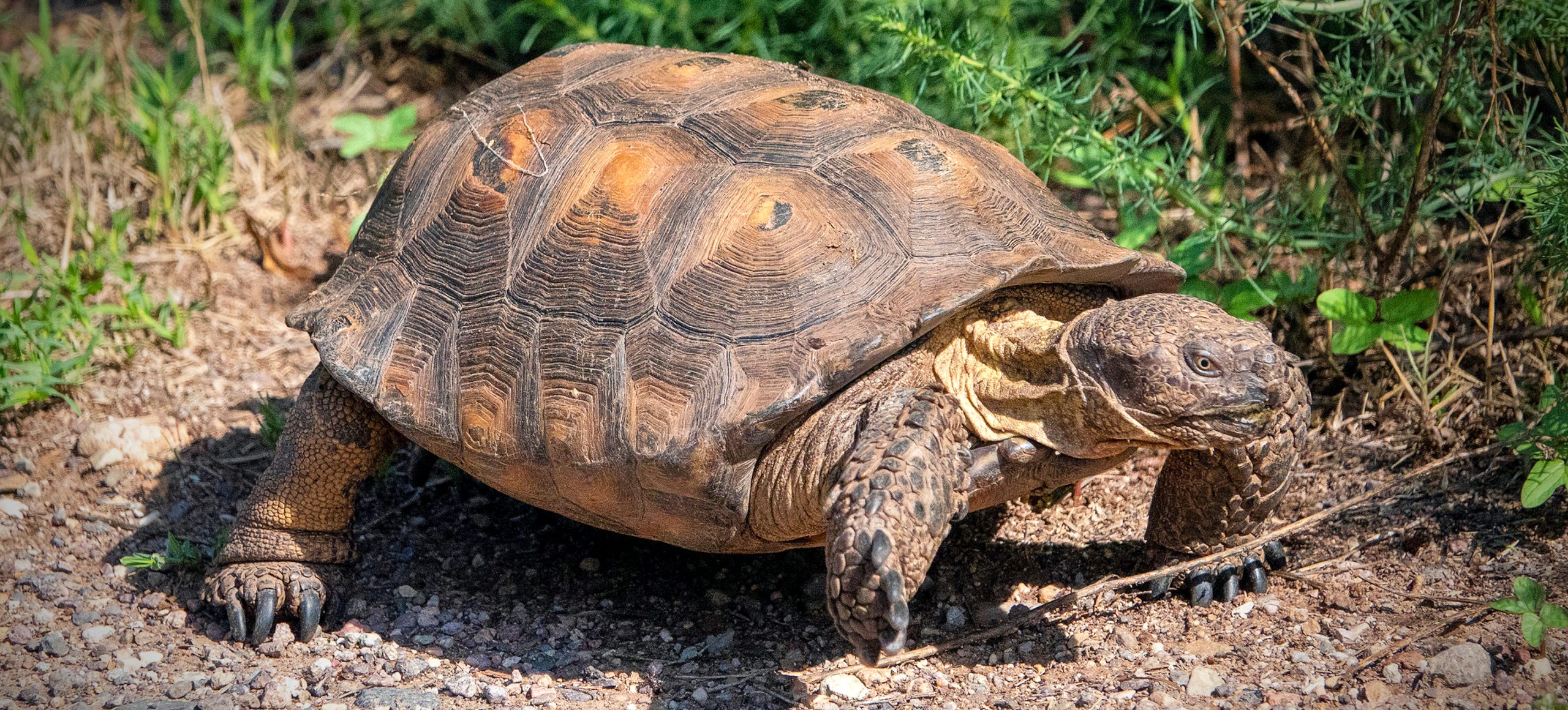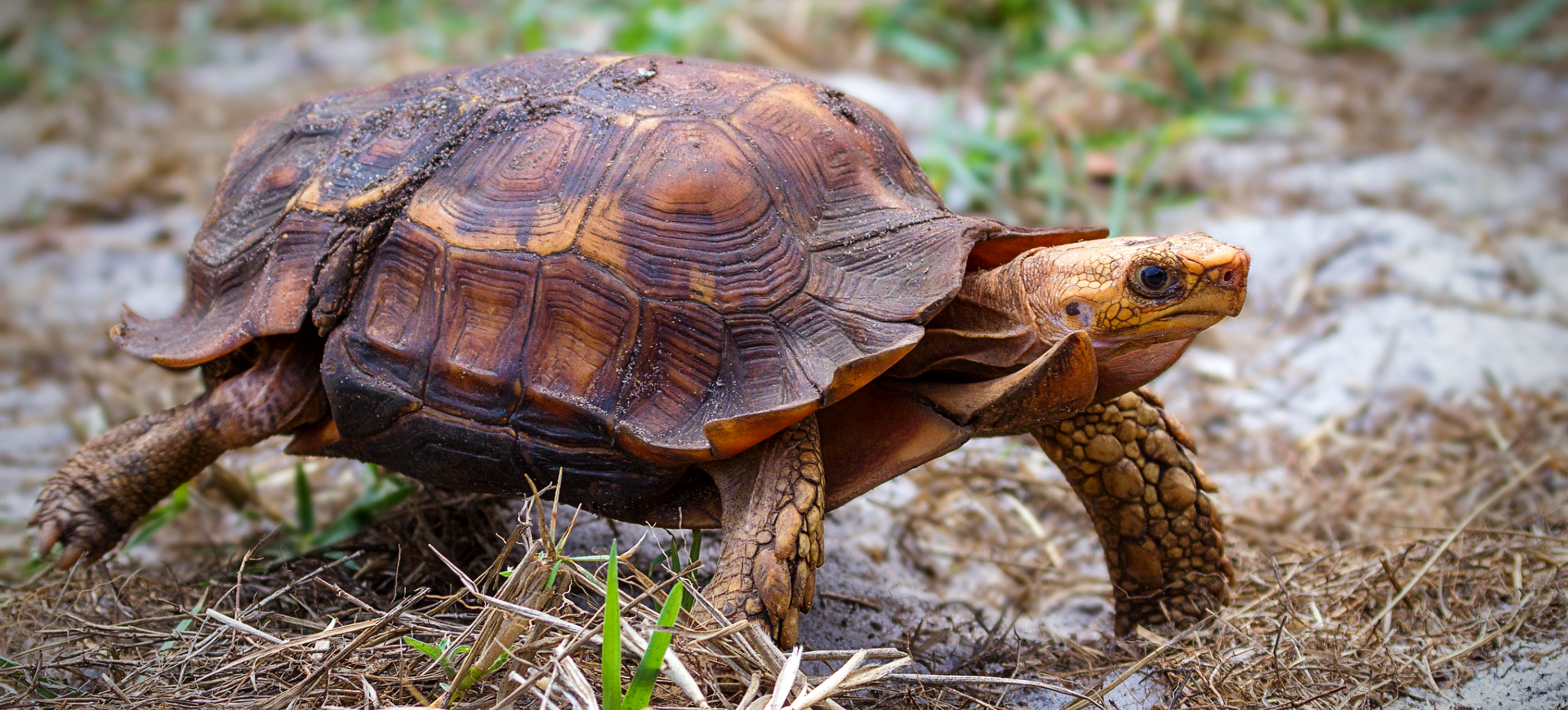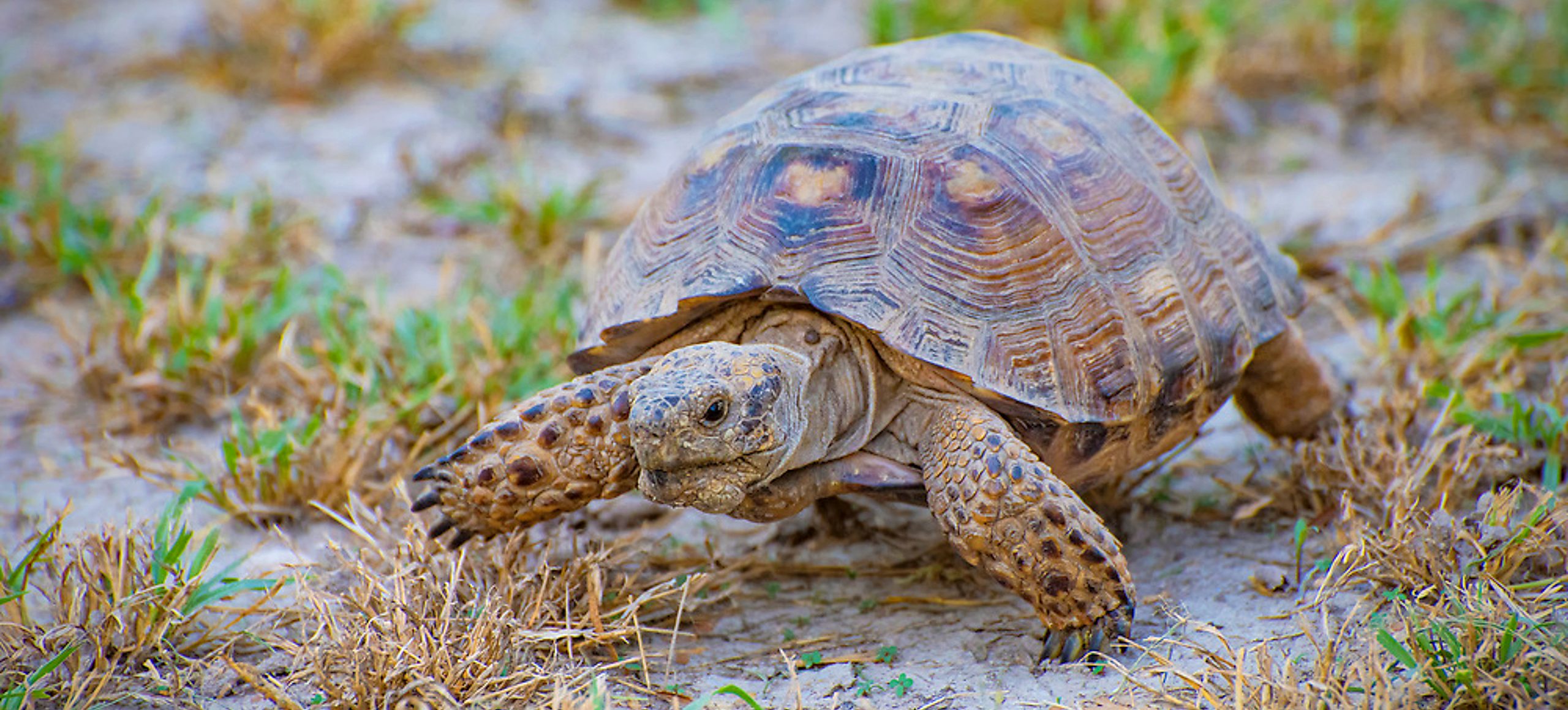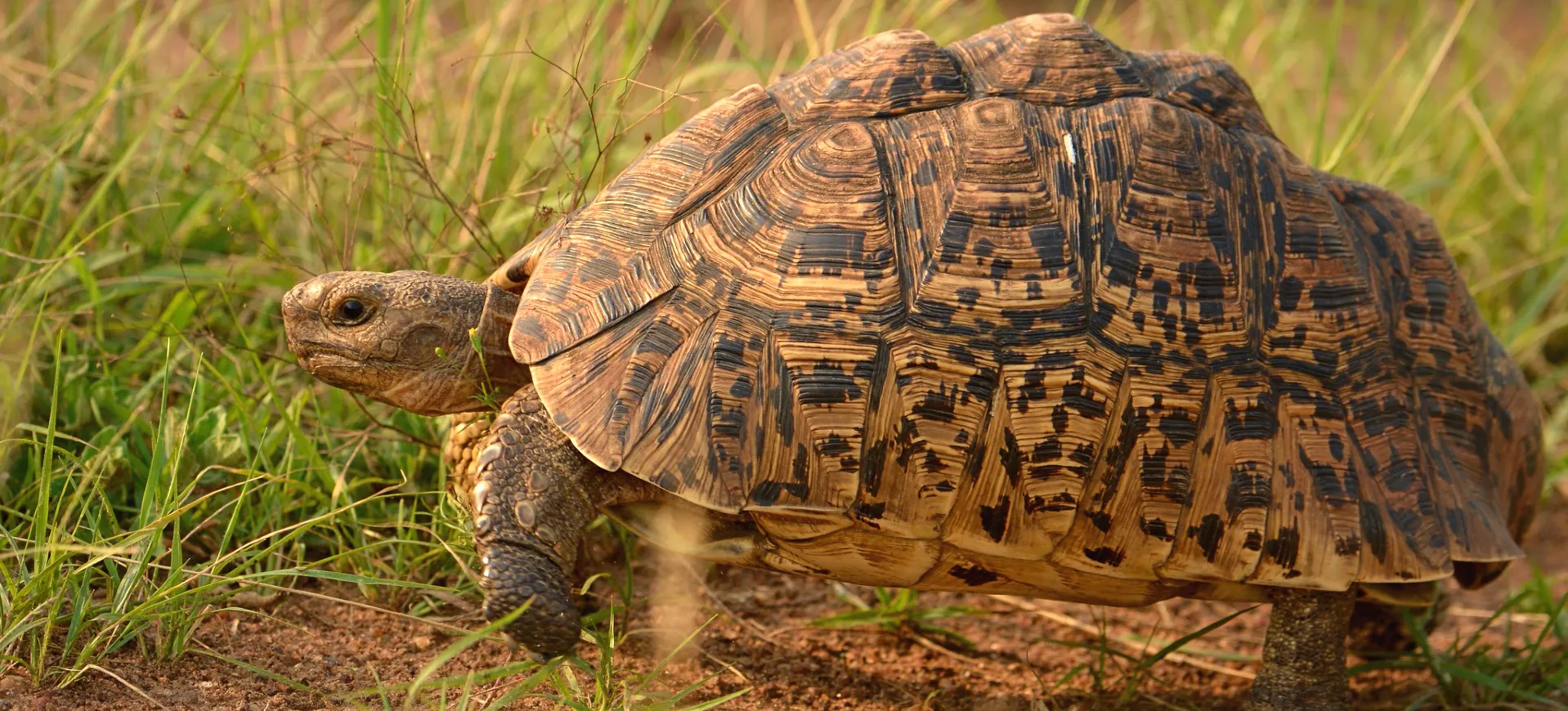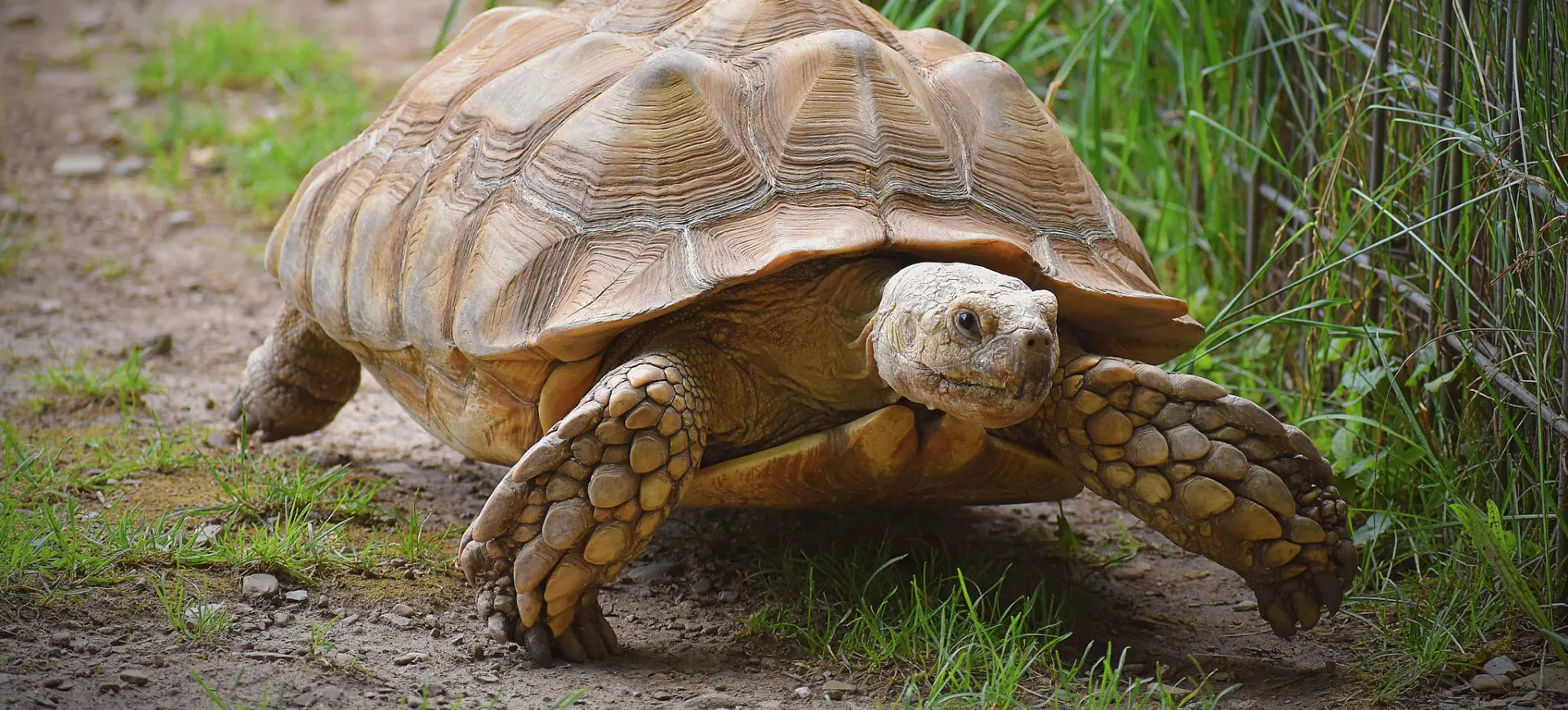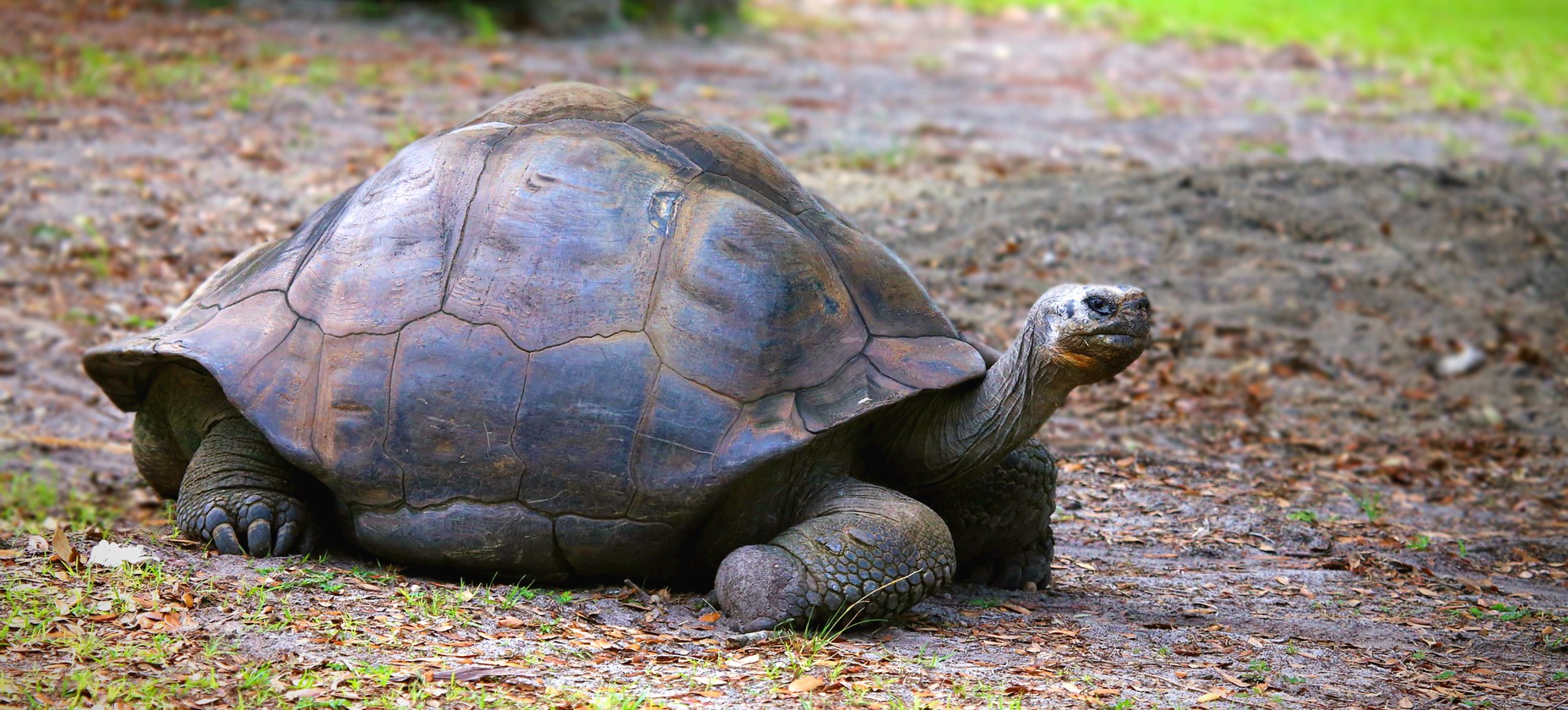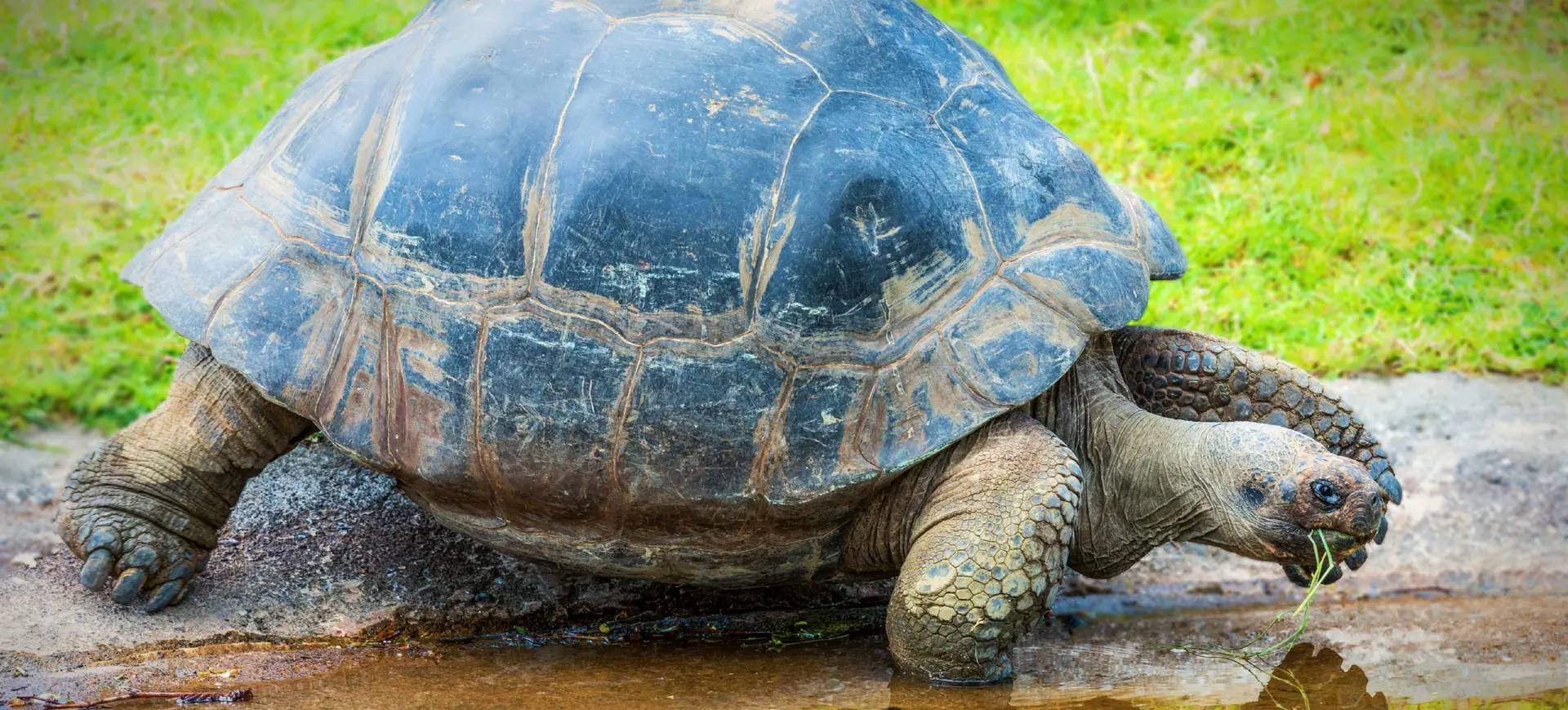Overview
The Red-footed Tortoise (Chelonoidis carbonarius) is a medium-sized tortoise native to South America. It is notable for its distinctive red or orange markings on the legs, tail, and head, contrasting with its dark-colored carapace. These tortoises are primarily terrestrial, though they are capable swimmers. They are known for their docile nature and are a popular species among reptile enthusiasts.
Red-footed Tortoises display a variety of behaviors that are fascinating to observe. In the wild, they are primarily diurnal, spending most of their time foraging for food. These tortoises are omnivores, consuming a mixed diet that includes fruits, vegetables, and occasionally meat. They have also been observed engaging in social interactions, particularly during mating season.
Their habitat preferences vary but are commonly found in forested areas, including dry and rainforest environments. Adapted to a tropical climate, they thrive in warm and humid conditions. Their adaptability to different environmental conditions has played a crucial role in their survival, as they can inhabit a range of forest types.
Taxonomy
Kingdom
Phylum
Class
Order
Family
Genus
Species
Type
Physical Description:
Red-footed Tortoises have a highly domed shell, varying in color from dark brown to black. The shell is often adorned with lighter-colored growth rings on each scute. These tortoises are medium-sized, with males generally larger than females. Their most distinguishing feature is the bright red or orange markings on their extremities, including their head and tail.
The skin of Red-footed Tortoises is generally black with spots or blotches of red or orange. Their limbs are sturdy and adapted for a terrestrial lifestyle, aiding digging and foraging. The plastron, or underside of the shell, is lighter in color, ranging from yellow to light brown. Their overall physical appearance is not only a result of their genetic makeup but also reflects the environment in which they live.

Lifespan: Wild: ~50 Years || Captivity: ~60 Years

Weight: Male: 20-35 lbs (9-16 kg) || Female: 15-30 lbs (7-14 kg)

Length: Male: 12-16 inches (30-40 cm) || Female: 10-14 inches (25-35 cm)

Height: Male: 5-6 inches (13-15 cm) || Female: 4.5-5.5 inches (11-14 cm)

Top Speed: 0.16-0.30 mph (0.26-0.48 km/h)
Characteristic:
Native Habitat:
The native habitat of the Red-footed Tortoise includes a wide range of forest types in South America. They are predominantly found in tropical rainforests, dry forests, and savanna areas. This adaptability to various forest environments has been key to their survival across different geographic regions.
Their preference for humid, forested areas provides ample food sources and shelter. The dense vegetation offers protection from predators and extreme weather conditions. The forest floor, rich in organic material, is an ideal environment for these tortoises, supporting their foraging habits and providing essential nutrients.
Climate Zones:
Biogeographical Realms:
Continents:
Diet:
Diet & Feeding Habits:
Red-footed Tortoises are omnivores with a surprisingly varied diet. In the wild, they consume various fruits, vegetables, and occasionally animal matter such as insects and carrion. They are particularly fond of ripe fruits, which form a significant part of their diet. This varied diet is crucial for their health, providing a balance of nutrients.
Their diet can be supplemented with leafy greens, vegetables, and specialized tortoise food in captivity. It is important to ensure captive tortoises receive adequate calcium for shell health, often supplemented through dietary additions. Their feeding behavior is influenced by the availability of food resources in their habitat, and they travel considerable distances searching for food.
Mating Behavior:
Mating Description:
Red-footed Tortoises have a unique mating behavior that is both fascinating and complex. Males often combat other males to establish dominance and access to females. These encounters can involve shell ramming and circling. The dominant male then courts the female through head bobbing and circling.
The actual mating process is typically noisy, with males making distinct vocalizations. After mating, females lay a clutch of eggs, typically in a nest dug in the ground. The number of eggs varies but can range from 5 to 15. The eggs are incubated for several months before hatching.
Reproduction Season:
Birth Type:
Pregnancy Duration:
Female Name:
Male Name:
Baby Name:
Social Structure Description:
Red-footed Tortoises are generally solitary animals, though they can be found in groups, especially in areas with abundant food resources. They do not form permanent social structures, but temporary aggregations can occur, particularly during the mating season or in favorable feeding locations.
These tortoises communicate through various visual and auditory signals, particularly during mating rituals. While they are not highly social compared to other animal species, they exhibit various behaviors that suggest social interaction, particularly during courtship and mating.
Groups:
Conservation Status:
Population Trend:
The population of Red-footed Tortoises in the wild is difficult to quantify accurately due to their wide distribution and varying densities in different areas. However, it is known that their numbers are decreasing, primarily due to habitat loss, poaching, and the pet trade. They are still relatively common in some regions, but in others, their numbers have dwindled significantly.
Conservation efforts are focused on habitat protection and regulation of trade. Education and awareness programs are crucial in reducing the demand for these tortoises as pets and promoting their conservation in their natural habitats. The success of these efforts is key to this species’ survival in the wild.
Population Threats:
The primary threats to the Red-footed Tortoise include habitat destruction due to deforestation for agriculture and urban development. This loss of habitat reduces their available living space and food sources. Additionally, they face threats from poaching for the pet trade and local consumption.
Climate change is also a concern, as it can lead to alterations in their habitat and impact the availability of food resources. Conservation efforts must address these threats to ensure the species’ long-term survival in the wild.
Conservation Efforts:
Conservation efforts for Red-footed Tortoises include habitat protection and enforcement of laws against illegal trade. In some regions, there are specific programs aimed at protecting their natural habitats and regulating trade. Conservationists are also working to increase public awareness about the threats facing these tortoises.
Captive breeding programs play a crucial role in conservation efforts. These programs not only help to maintain a stable population in captivity but also provide valuable information on the biology and needs of the species, which can be applied to conservation strategies in the wild.
Additional Resources:
Fun Facts
- Red-footed Tortoises can live up to 50 years in the wild and even longer in captivity.
- They are known for their unique “red feet,” with bright red or orange scales on their legs.
- These tortoises are capable of making vocalizations, which is uncommon among tortoises.
- They have a varied diet that includes fruits, flowers, fungi, and occasionally invertebrates.
- Red-footed Tortoises are excellent climbers and can scale obstacles taller than their shell height.
- They are native to various habitats across South America, from rainforests to savannas.
- These tortoises are known for their ritualized courtship dances during mating.
- They have a distinctive gular scute under their chin, absent in many other tortoise species.
- Red-footed Tortoises can enter a state of decreased activity but don’t truly hibernate.
- Each tortoise has a unique shell pattern, much like a human fingerprint.








